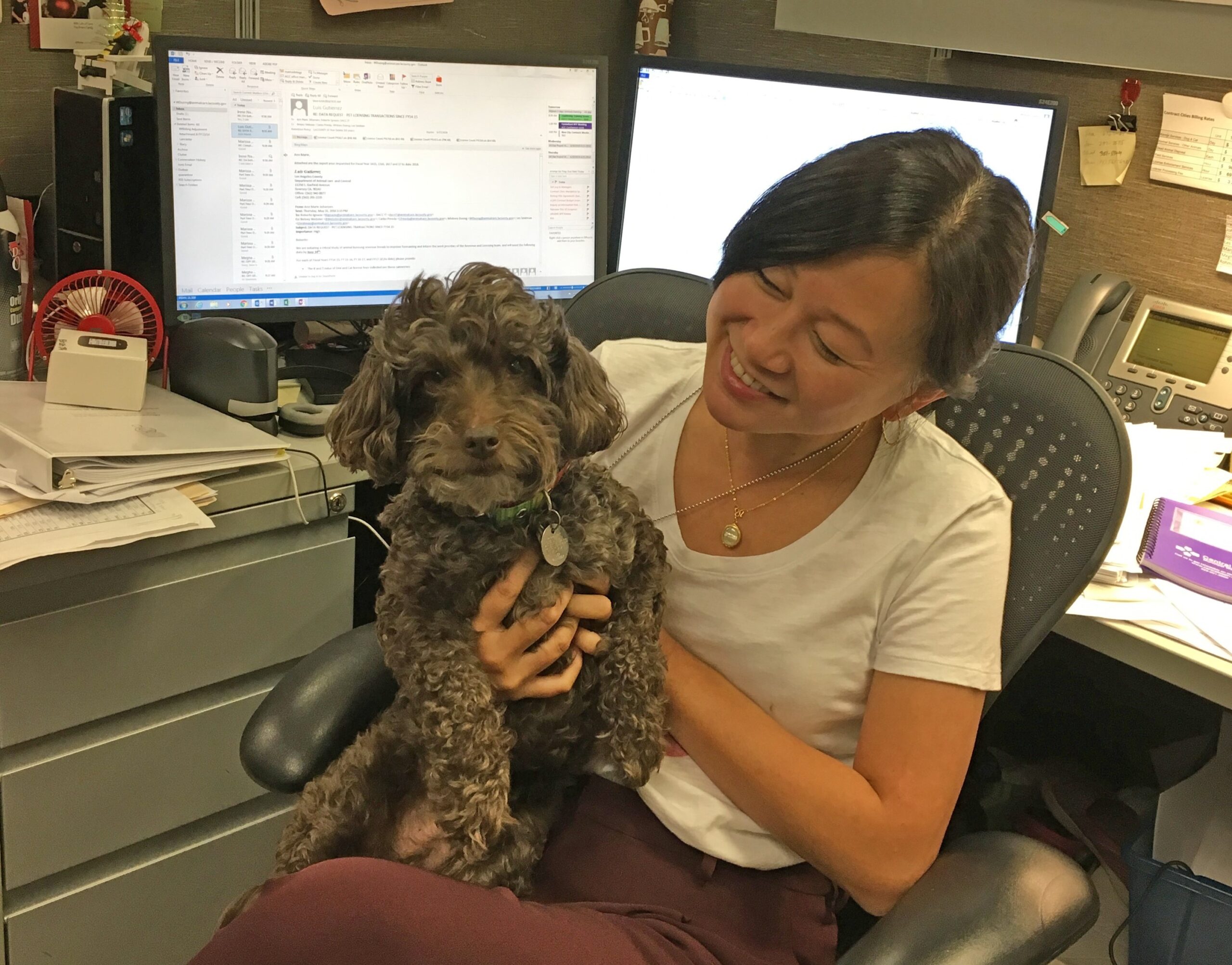Last month I wrote about the benefits of pets in the workplace. Improved employee morale and engagement, work-life balance, recruitment and retention, and stress reduction in the workplace are just some of the many benefits to having pets at work. However, to make this experience positive for everyone there are some best practices to consider. In this blog we’ll explore the top tips for bringing pets to work.
First, it’s important to remember that not all pets WANT to come to work with you. Some pets find this new environment too stressful and would much prefer to remain at home snoozing on the sofa until you return. So, make sure your pet is up for the change in environment. For those who aren’t, start a work-based private social media group where coworkers can share cute photos and videos of their stay-at-home pets so they, too, can participate in sharing their pets with others.
Up until now I’ve said “pet” because there may be some cats that enjoy coming to work. However, there are special considerations for cats at work: more people are allergic to cats than dogs, cats are more difficult to confine, and a litterbox must be provided that can cause unwanted odors. For those reasons, cats are usually not considered as pets that normally come to work. However, there can be exceptions; Walter the hairless Sphinx cat accompanies his mom to our offices every so often. Walter is confined within her office and loves to visit with people who stop by. He is as outgoing as any dog and enjoys his trips to the office.
Additionally, several DACC staff foster nursing kittens in their workspaces. These little kittens need bottle feeding every two hours and other caretaking. They stay snug in their crates, nestled in their blankets until feeding time. They are too young to wander around or use a litterbox, so they are very easy to manage. Once they are old enough for adoption, they are returned to the animal care centers for adoption. For cat-loving offices, becoming foster caregivers for kittens from your local animal care center is a great employee engagement opportunity while saving the lives of our most vulnerable animals.

But when we talk about pets at work, we’re usually talking about dogs. To ensure a safe and enjoyable Dogs at Work program, dogs must:
- Be friendly and well-behaved. If a dog exhibits any unprovoked aggression, is noisy, disruptive, or difficult to handle it should be removed immediately.
- Be healthy, currently vaccinated against rabies and common canine illnesses, and on monthly flea/tick prevention medication to ensure it does not transmit any illnesses or parasites to other dogs at work.
- Wear identification tags and be microchipped in case they are separated from their owner. A dog left alone might become anxious and try to escape to find its owner; having identification on it will help ensure they are reunited.
- Be well-groomed to prevent odor or excessive shedding.
- Be spayed or neutered to avoid having a female dog in heat at the office and unneutered male behaviors such as heightened territorial behavior, or disputes for dominance.
- Be always under control, such as confined to a private office or cubicle, on a leash, or in a crate.
- Not be allowed into food areas.
- Not damage the office’s facility, furniture, and equipment.
- Be transported to and from the office using a leash or carrier for their own safety.
Additionally, the owner must ensure there are plans in place for their pet’s comfort and safety, as well as for coworkers and other animals. Here are some considerations:
- Bring a toy or two to keep the dog occupied.
- Have a bed or designated area for it to rest away from commotion if the day gets too demanding and it needs a break.
- Make sure it always has access to fresh water.
- Plan for regular breaks for the dog to go outside for elimination purposes and pick up and dispose of any solid waste immediately.
- Food and treats should be stored in pest-proof containers.
- If the owner must leave the office, they should have an agreement with a willing coworker to monitor and care for their pet in their absence, including an emergency plan in place in case something happens when they’re away from work and the building needs to be evacuated. An agreement with a willing worker to evacuate their dog on their behalf and care for it until the dog and owner are reunited should be in place.
- Make sure the office space is dog-proofed and safe for the animal. Dogs can come to harm by chewing on cords, accessing cleaning materials, or escaping unsecured areas.
- Be prepared to take the dog home if if’s behavior or health makes it a nuisance or danger to people or other animals, or if asked to do so by their manager.
Bringing pets to work can bring a unique sense of joy and comfort to the workplace, but it comes with responsibilities and considerations. By following these best practices, you can create a pet-friendly environment that benefits both you and your colleagues. Remember that open communication and respect for others’ boundaries are key to making the experience enjoyable for everyone. With careful planning and a little extra effort, you can enjoy the perks of pet companionship at work while maintaining a productive and harmonious atmosphere.
Marcia Mayeda
You can subscribe to Marcia’s blog here: https://animalcare.lacounty.gov/directors_blog/





